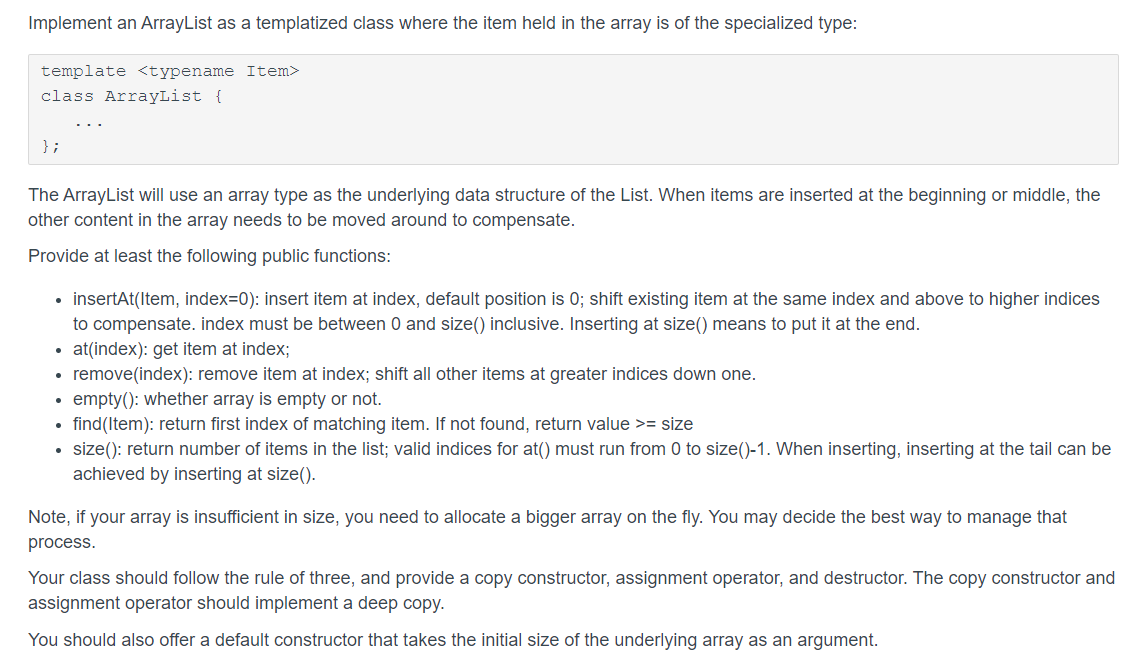Question
Implement the following in C++ using the given template below #include using namespace std; template class ArrayList { public: ArrayList(size_t asize=10) { // To do
Implement the following in C++ using the given template below

#include
using namespace std;
template
~ArrayList() { // To do }
ArrayList(const ArrayList &other) { // To do }
ArrayList& operator= (const ArrayList &other) { // To do return *this; }
void insertAt(Item a, size_t index=0) { // To do } Item& at(size_t index) { // To do } void remove(size_t index) { // To do } bool empty() { // To do return true; } size_t find(Item item) { return 0; } size_t size() { // To do } };
// DO NOT MODIFY BELOW HERE template int main() { ArrayList
Step by Step Solution
There are 3 Steps involved in it
Step: 1

Get Instant Access to Expert-Tailored Solutions
See step-by-step solutions with expert insights and AI powered tools for academic success
Step: 2

Step: 3

Ace Your Homework with AI
Get the answers you need in no time with our AI-driven, step-by-step assistance
Get Started


